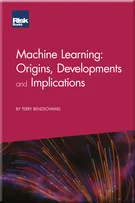Appendix 2: Timeline of significant contributions to information theory and cryptography
Introduction: Money is information on the move
Trends in digital money
How digital money creates new operational risks
Operational risk and cryptography
Operational risks of digital money
Commercial bank digital money
Private digital money, including cryptocurrencies
Public digital money, including CBDCs
Impact of digitisation on operational risk management
Impact of digitisation on operational risk organisations
Impact of digital money and operational resilience on ORM processes and people
Impact of digitisation on operational risk management in the future
Theory of money
Information theory
Classical cryptography
Modern cryptography
Conclusion
Acknowledgements
Appendix 1: Significant contributors to information theory and cryptography
Appendix 2: Timeline of significant contributions to information theory and cryptography
Appendix 3: Relevant information standards
Appendix 4: High-level risk registers
Bibliography
This appendix shows the historical timeline of significant contributions to information theory and cryptography, concentrating on the modern era – ie, post-WWII (see Chapter 14 for a short overview of classical cryptography). There are many histories of cryptography, and IT in particular, but here we are interested in those innovations that relate to the subject of digital money. Nor is the timeline comprehensive, but instead attempts to identify key events in history that leads us to the innovations that are happening in finance, information technology and cryptography, and changing the financial industry.
ADVANCES IN CRYPTOGRAPHY
The key trends to note in Table A2.1 are the explosions in innovations in both cryptography and IT propelled by investments in both topics just after WWII. In particular, driven by significant increases in computing power just after the war, was a golden period for modern cryptography, culminating in the development of public/private key cryptography (PPKC) by academics Ron Rivest, Adi Shamir and Leonard Adleman (RSA). This asymmetric approach to cryptography ruled unchallenged until 1994 when a US academic, Peter Shor, showed that algorithms such as RSA
Copyright Infopro Digital Limited. All rights reserved.
As outlined in our terms and conditions, https://www.infopro-digital.com/terms-and-conditions/subscriptions/ (point 2.4), printing is limited to a single copy.
If you would like to purchase additional rights please email info@risk.net
Copyright Infopro Digital Limited. All rights reserved.
You may share this content using our article tools. As outlined in our terms and conditions, https://www.infopro-digital.com/terms-and-conditions/subscriptions/ (clause 2.4), an Authorised User may only make one copy of the materials for their own personal use. You must also comply with the restrictions in clause 2.5.
If you would like to purchase additional rights please email info@risk.net











